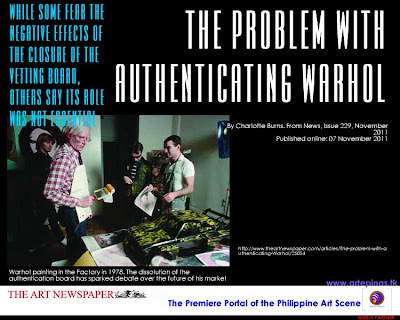
The problem with authenticating Warhol
While some fear the negative effects of the closure of the vetting board, others say its role was not essential
By Charlotte Burns. From News, Issue 229, November 2011
Published online: 07 November 2011
Works by Andy Warhol are due to take centre stage in this month’s contemporary art auctions in New York (7-9 November). An estimated $114m worth of art, comprising 49 works, ranging from $20,000 to $19m, will be sold; works by Warhol will represent 11% of the evening sale material. Their success, or failure, will act as a barometer for the health of the contemporary market at a time when fears of a new recession are looming.
There is, though, a twist in this month’s test of the Warhol market following the announcement that the Andy Warhol Foundation will dissolve its authentication board at the beginning of 2012.
The board, which has come under fire for its controversial decisions (see box), has acted as the sole arbiter in authenticating Warhols for the past 16 years. Some fear the negative effects of its closure. It leaves “the Warhol market adrift,” says Anders Petterson, the founder and managing director of ArtTactic. “This ship is too big to be left to free float. Despite the fact that the board was often criticised for its decisions, it acted as an anchor for a complex market characterised by large production volumes, extensive use of appropriation-based techniques and various degrees of the artist’s involvement in the final product.”
While the move “is bound to cause some type of confusion in the market in the short-term”, says Oliver Barker, the deputy chairman of Sotheby’s Europe and its senior international specialist in contemporary art, he feels that the closure is ultimately “more an inconvenience than a major commercial disaster”.

















































































































































































